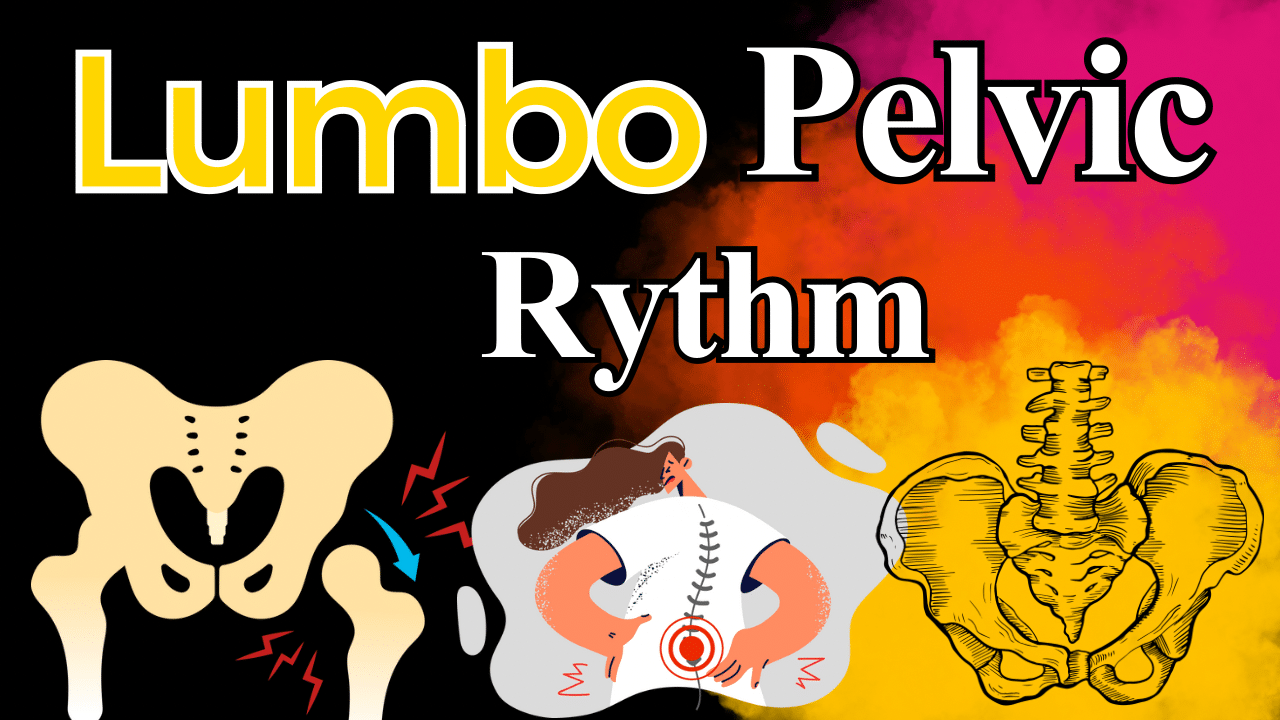Lumbo pelvic rythm –
The lumbo pelvic rhythm refers to the coordinated movement and interaction between the lumbar spine (lower back) and the pelvis during certain functional movements.
such as walking or bending forward. It describes the relationship between the movement of the lumbar spine and the movement of the pelvis.
During normal gait (walking), the lumbar spine and the pelvis work together to maintain balance, stability and efficient movement.
As one side of the pelvis rotates forward during the swing phase of walking, the lumbar spine on the same side rotates in the opposite direction to maintain balance and alignment.
This reciprocal movement between the lumbar spine and pelvis is known as the lumbo-pelvic rhythm.
In general the lumbar spine and pelvis should move in a coordinated and synchronized manner to distribute forces and maintain optimal biomechanics.
Dysfunction or impairment in the lumbo-pelvic rhythm can lead to altered movement patterns, compensation and potential pain or discomfort in the lower back or pelvis.
Physical therapists and other healthcare professionals often assess the lumbo-pelvic rhythm as part of a comprehensive evaluation when treating individuals with lower back pain or gait abnormalities.
They may use observation, palpation, and movement analysis to identify any asymmetries, limitations, or dysfunctions in the lumbo-pelvic rhythm, and then develop appropriate treatment strategies to address them.
What causes Lumbo pelvic rythm to disturb ?
Certainly! When evaluating the lumbo-pelvic rhythm, healthcare professionals may consider several factors:
- Range of Motion: They assess the range of motion of the lumbar spine and pelvis separately to identify any restrictions or abnormalities. Reduced range of motion in either the lumbar spine or pelvis can disrupt the smooth coordination between the two.
- Muscle Imbalances: Imbalances in the muscles surrounding the lumbar spine and pelvis can affect the lumbo-pelvic rhythm. Weakness or tightness in specific muscles can alter movement patterns and lead to compensatory mechanisms.
- Alignment and Posture: Evaluating the alignment and posture of the lumbar spine and pelvis is crucial. Deviations such as excessive lordosis (inward curve) or anterior pelvic tilt can disrupt the lumbo-pelvic rhythm.
- Functional Movements: Assessing functional movements, such as walking, squatting, or bending, helps identify any abnormalities in the lumbo-pelvic rhythm during dynamic activities.
Treatment approach for Lumbopelvic rythm dysfunction
Treatment approaches for addressing lumbo-pelvic rhythm dysfunction may include:
- Exercise Therapy: Targeted exercises can help improve muscle strength, flexibility, and coordination, restoring the lumbo-pelvic rhythm. This may involve exercises that target the core, gluteal muscles, and hip muscles.
- Manual Therapy: Techniques such as joint mobilization, soft tissue mobilization, or myofascial release can be used to address restrictions in the lumbar spine or pelvis, helping to restore normal movement patterns.
- Postural Education: Educating individuals about proper posture and body mechanics is important to maintain a healthy lumbo-pelvic rhythm during daily activities.
- Movement Retraining: Specific exercises or activities can be used to retrain movement patterns and reinforce the coordination between the lumbar spine and pelvis.
It’s important to note that the treatment approach will vary depending on the individual’s specific condition and needs. A qualified healthcare professional, such as a physical therapist, can provide a thorough evaluation and develop an appropriate treatment plan to address lumbo-pelvic rhythm dysfunction.
Read about Scapulohumeral rythm also
